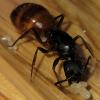The nickname "testaceax" is formulated by this aligning with the testaceus-group, but reaching M. mendax size. (testace-ax)
1. Location - Collected from SoCal
2. Date - Workers from late April (unsure as to which collection date it was from), gyne from last year
3. Habitat - Shrubland/chaparral
4. Length - Workers 2-9mm gynes 12-13mm
5. Color, hue, pattern, texture - Workers golden to deep golden in hue, gynes golden brown to brown
6. Distinguishing characteristics - Abundant pubescents over entire body and abundant hairs
7. Anything else distinctive - nocturnal, forms massive colonies with up to five 30cm tumulus entrances, forms large foraging columns, very distinctly different from M. testaceus, and very distinctly different from M. mexicanus
8. Nest description - Ranges from one to five tumuli up to 30cm in diameter.
Preface/acknowledgement of key validity and flaws:
I do acknowledge that the publicly available Myrmecocystus keys, mainly the Endiodioctes key, do have flaws and don't include all known species or variants. With that being said, there is only one publicly known variant/species (which is this one) in the Myrmecocystus subgenus in California. Even though the Myrmecocystus subgenus key does not include all the undescribed species, it doesn't concern this as they are not from California.
I will start off with the queens first then address workers afterwards. This will be a long post bear with me, haha.
Gyne frontal face and profile before keying process.
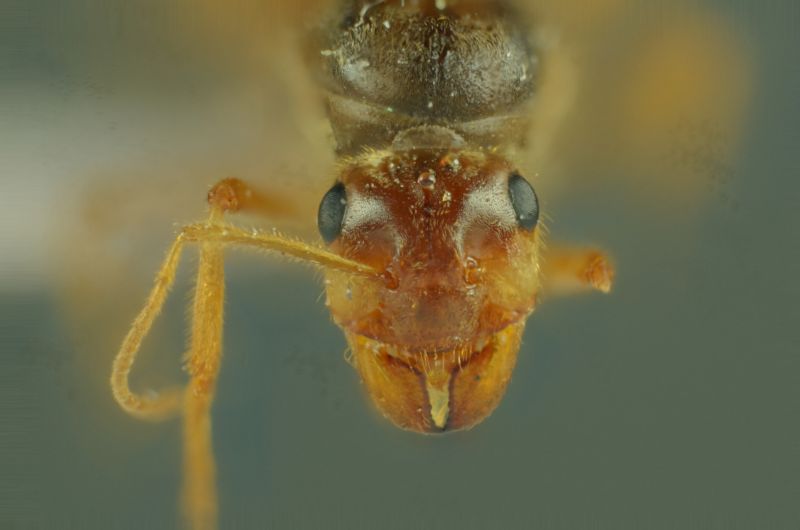
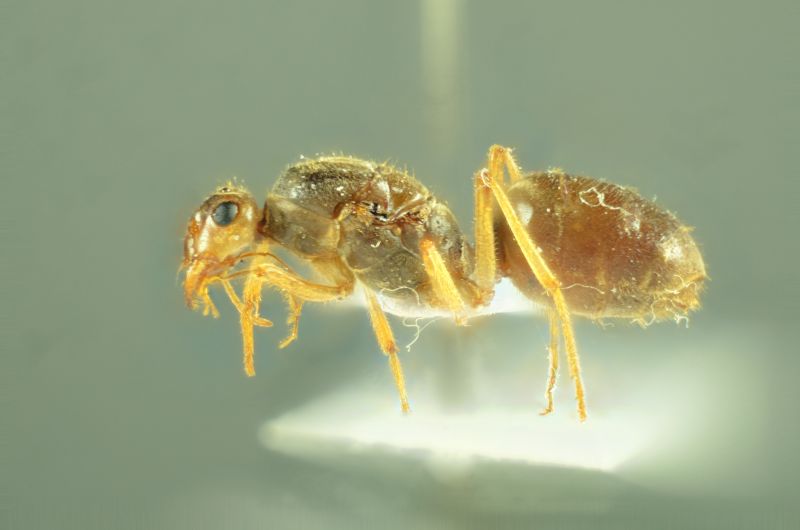
1
- Fifth segment of maxillary palp broadest in middle, narrowed basally and apically; hind femur without erect hairs on dorsal surface; hind tibia with hairs decumbent, never fully erect . . . . . 2
- Fifth segment of maxillary palp broadest well basad of middle, gradually narrowed toward apex or parallel sided; hind femur with erect hairs on dorsal surface; hind tibia with abundant fully erect and suberect hairs . . . . . 5
Using figure 1a, the fifth segment of the maxillary palp is broadest well basad of middle and gradually narrows towards the apex. Using figure 1b shows that the hind femora has hairs that are in between suberect to erect. Using the same figure, the hind tibia has abundant suberect hairs. This negates couplet 2 and moves this to couplet 5.
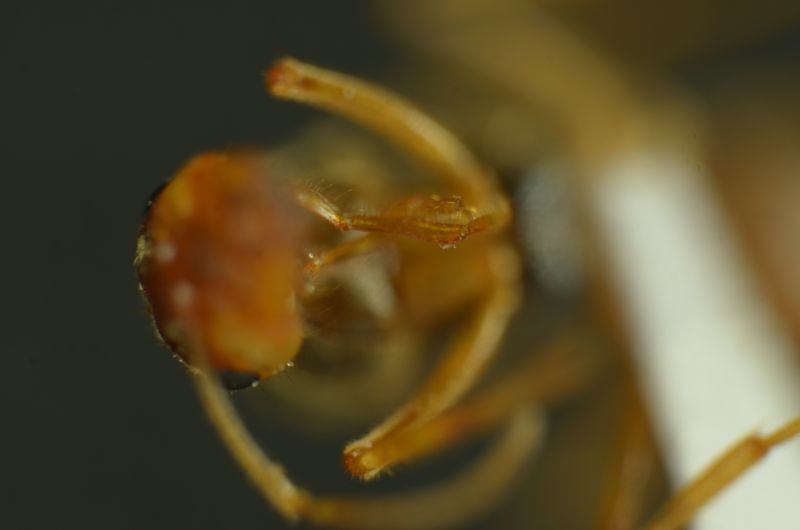
(figure 1a)
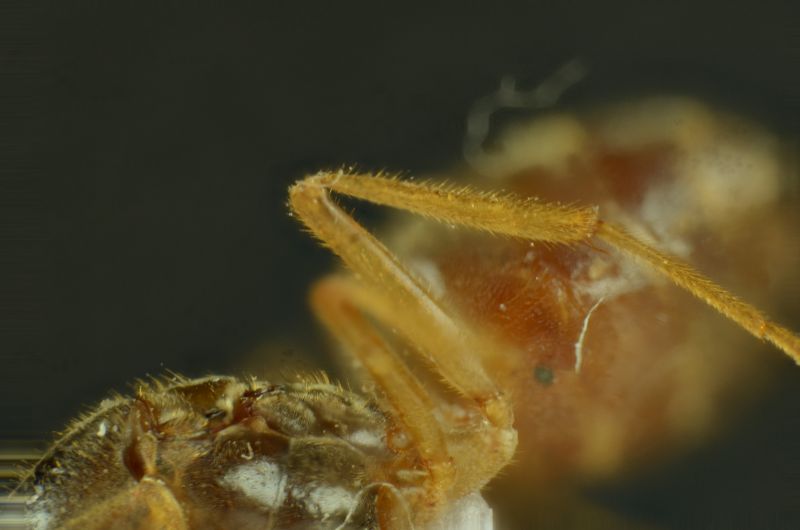
(figure 1b)
5
- Thorax and gaster brown, legs usually yellowish; HW usually less than 1.85 mm; penultimate segment of maxillary palp slender, parallel-sided . . . . . Myrmecocystus testaceus
- Thorax and gaster light brownish yellow to yellow, legs concolorous with thorax; HW 1.90 mm or more; usually more than 2.0 mm; penultimate segment of maxillary palp distinctly broadest basad . . . . . Myrmecocystus mexicanus
This couplet is where it fails to match either species. The thorax and gaster are brown and the legs are yellow, but the head width is nearly 2mm if not 2mm - the penultimate segment of the maxillary palp is not slender or parallel-sides which negates M. testaceus. M. testaceus also is negated by the workers and vast size of this queen. This make it align with M. mexicanus by head width and palp broadness, but this flew spring and is clearly not similar to M. mexicanus.
Worker Keying Segment~~~
Worker size range compared to queen picture before keying process.
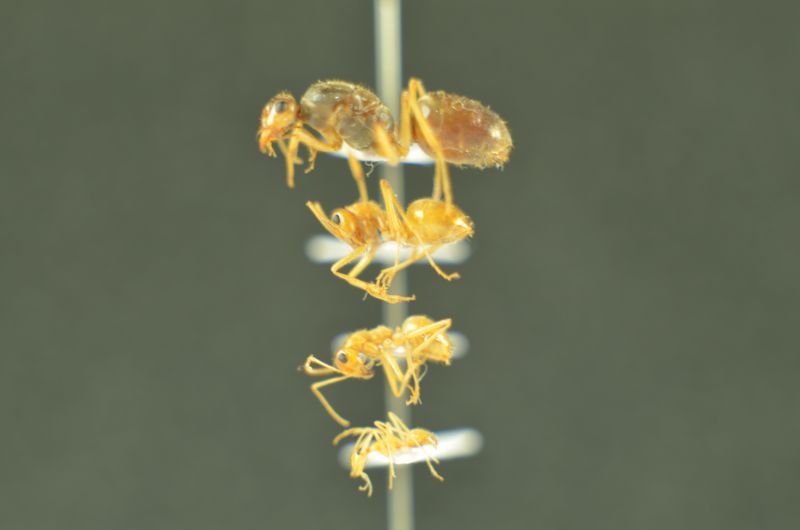
From top to bottom - gyne, major, media, minor. The minor is ~2mm, median workers usually are ~6mm, majors are ~8-9mm, gynes are ~13mm.
1
- Dorsal surface of propodeum strongly, angularly projected upward over posterior two-thirds; erect hairs very sparse, with few or none on outer face of hind tibia; upper eye margin little below upper margin of head . . . . . 2
- Dorsal surface of propodeum either flat or evenly convex; body often abundantly hairy; upper eye margin usually well below upper margin of head . . . . . 3
Using figure 2a, it is clear the dorsal surface of propodeum is flat and does not form a strong, angular projection. In addition, the body abundantly hairy. Using figure 2b, the eyes are below the upper head margin. This negates the option of couplet 2 and moves this to couplet 3.
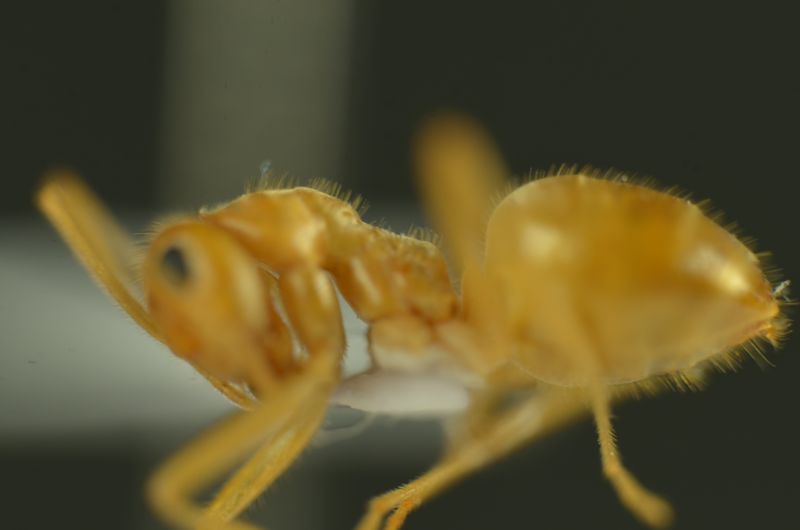
(figure 2a)
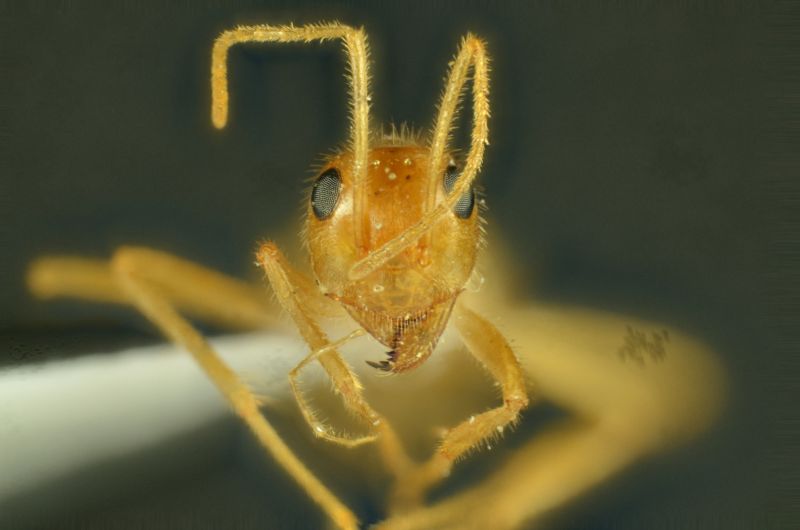
(figure 2b)
3
- Fully erect hairs conspicuous on thoracic dorsum, discs of first and second terga and on scape and tibiae . . . . . 4
- No erect hairs on thoracic dorsum, discs of first and second terga, scape or tibiae . . . . . Myrmecocystus christineae
In figure 3a,there is obvious conspicuous fully erect hairs on thoracic dorsum, discs of first and second terga. In figure 2b, conspicuous fully erect hairs are present on the scapes and in figure 3b it is present on the tibiae. This negates M. christineae, which is also not possible due to size. This moves to couplet 4.
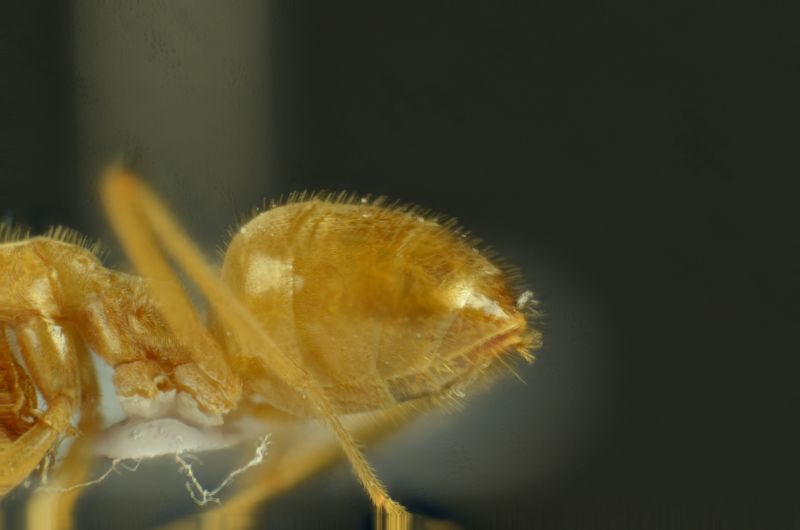
(figure 3a)
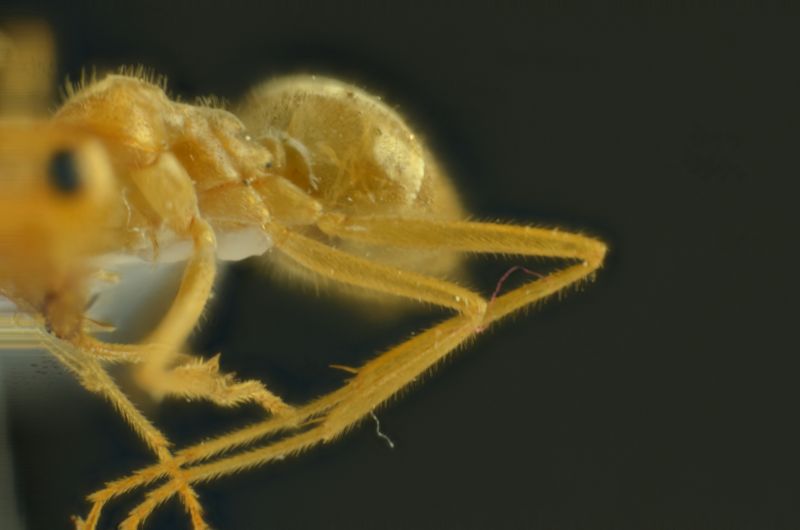
(figure 3b)
4
- Head, pronotum and gaster with abundant appressed pubescence; mid and hind tibiae usually with numerous erect hairs along apical half of outer face; upper eye margin often distinctly below occipital comer; if metanotal suture impressed, HL exceeds 1.3 mm . . . . . 5
- Head, pronotum and gaster shiny, with little or no appressed pubescence; mid and hind tibiae with not more than 3 or 4 erect hairs beyond basal third of outer face, usually none; upper eye margin coincident with occipital comer; metanotal suture deeply impressed and dorsal face of propodeum convex . . . . . Myrmecocystus navajo
The head, pronotum, and gaster all have abundant appressed pubescents as shown in figures 2b, figure 2a, and figure 3a respectively. In figure 3b, the mid and hind tibiae show numerous erect hairs along apical half of outer face. The upper eye margin is shown to be below the occipital corner in figure 2b. The metanotal suture is barely impressed, if it can even be considered impressed. This accumulation of features moves this to couplet 5 and negates M. navajo.
5
- Large, highly polymorphic species, HL 1.0-2.0 mm or more, usually in excess of 1.3 mm; metanotal suture usually impressed and propodeum as long as high or longer, juncture of dorsal and posterior faces broadly rounded . . . . . 6
- Smaller, moderately polymorphic species, HL 0.8-1.4 mm; metanotal suture not impressed; propodeum higher than long, juncture of dorsal and posterior faces abruptly rounded, often subangulate . . . . . Myrmecocystus testaceus
This species is absurdly polymorphic as shown at the start of the worker identification segment of this post; the head length covers from a hair shorter than 1mm up to almost 2mm. The metanotal suture is barely impressed if at all, but the propodeum is as long as high or longer as seen in figure 3a and 2a. The juncture of dorsal and posterior faces are abruptly rounded. So, it is clear that there is some contradictory things about this couplet; the juncture of dorsal and posterior faces align with M. testaceus, but head length and propodeum proportions align with that of couplet 6. This is where it should stop as it shares features of both M. testaceus and the couplet containing M. mexicanus and M. melanoticus.
I have frequented a handful of areas that this species inhabits and have observed dozens of nests in all conditions besides rain and snow. Something to note is that these align more with the testaceus-group rather than the mexicanus-group or pyramicus-group. In addition, it is very clearly not a known species and is undescribed. They are quite easily identifiable in the field and not easily confused with species such as M. mexicanus or M. testaceus unless you have no knowledge of what either species looks like or acts like. This is a very fun and enjoyable species to observe in the wild due to the quite big foraging columns and ability to blanket an area with workers.
Edited by ReignofRage, May 24 2022 - 5:57 PM.












